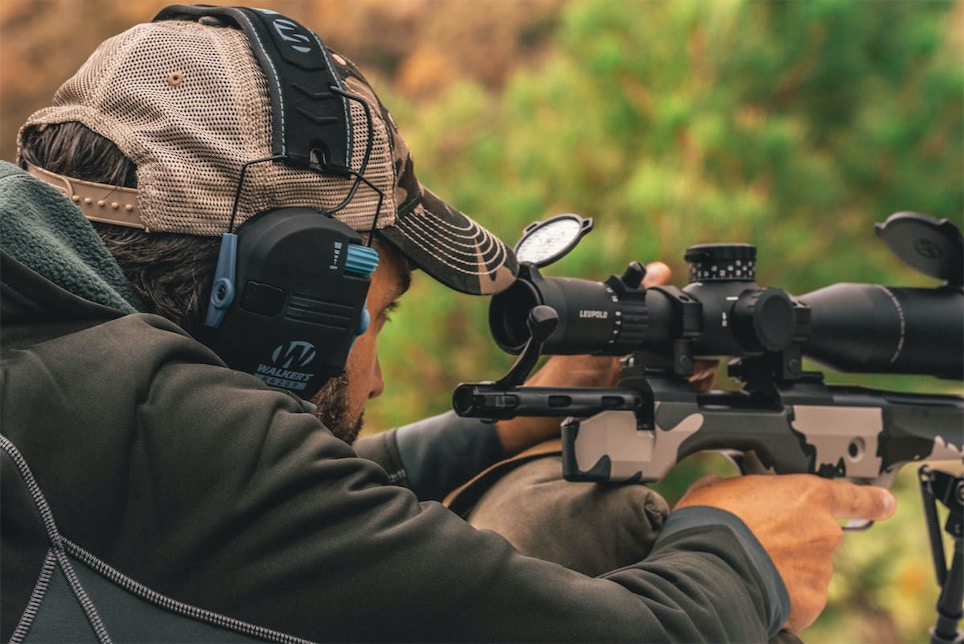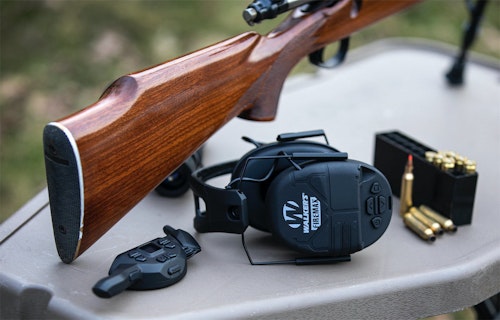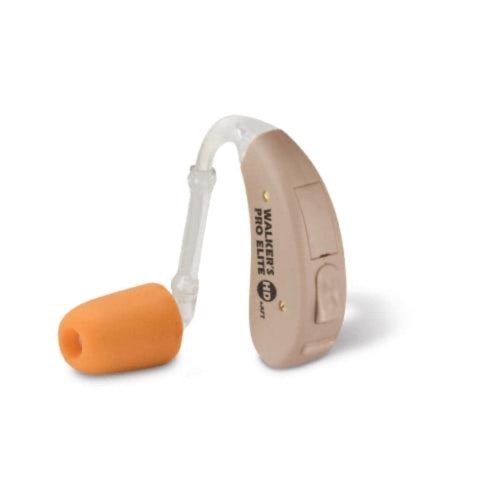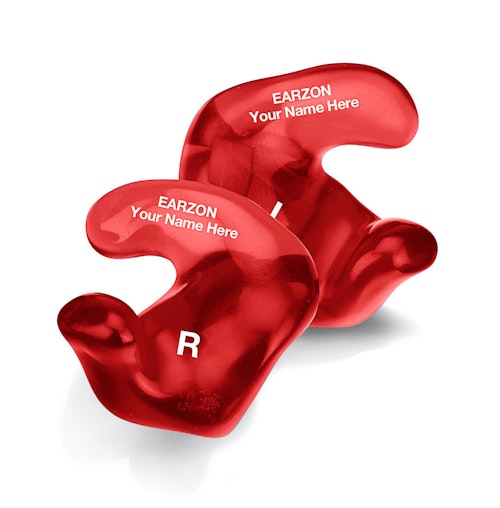For decades, I’ve been on the cusp of being legally deaf – and too proud to admit it.
Like millions of Baby Boomers, I’ve been exposed to loud noises since I was a teenager who shot trap, skeet and rifles off the bench without adequate hearing protection, listened to loud music, and got exposed to some things that go boom. We didn’t really know better back then, but no matter. The fact is, for decades my hearing has been terrible. For nigh onto 40 years it has been difficult, if not impossible, for me to hear distant elk bugling or turkeys gobbling. I rarely heard a deer stroll up from behind my treestand through the leaves. Basic conversations with others have been garbled so badly I became a fairly proficient lip reader.
So imagine what it’s been like for me the past couple of years, with everyone wearing face masks so I can’t read their lips. Conversations go something like this: “Can you read that sign?” “No, I don’t know the time.” “Sure, I’d like a glass of wine.” Embarrassing stuff.
Hearing Loss Statistics
According to the National Institute of Health, about one in eight Americans over the age of 12 years has hearing loss in both ears, based on standard hearing tests. Hearing loss is the third most common chronic health condition in the U.S. Approximately 15% of American adults (37.5 million) report some trouble hearing. Also, age is the strongest predictor of hearing loss among adults aged 20-69. In addition to aging, one of the most significant contributors to hearing loss is unprotected exposure to loud noise. Roughly 10% of American adults (25 million) has experienced significant tinnitus (ringing in the ears) in the past year, and loud noises can also cause and exacerbate tinnitus.
Being around too much loud noise on a repeated or prolonged basis can cause permanent hearing loss and tinnitus. The good news is that noise-induced hearing loss is preventable. It’s important to help educate shooters and hunters about the hazards of loud noise and for them to consistently practice good hearing health, which can help protect hearing for life.
And that’s why selling hearing protection products that both protect hearing and make communication possible at the same time is a growing marketplace.
Where It Began
People have been trying to assist their hearing since before Columbus discovered America, using everything from ear trumpets, acoustic urns and speaking tubes, to a bone conduction device that appeared in 1812. The first electric hearing aid, called the Akouphone, was created by Miller Reese Hutchison in 1898. It used a carbon transmitter to amplify sound by taking a weak signal and using electric current to make it stronger so that the hearing aid could be portable.
My life as an outdoorsman changed dramatically when I met the late Bob Walker among the chaos of a large outdoor writers’ turkey camp in the early 1990s. His company, Walker’s Game Ear (now Walker’s), founded in 1989, was just starting to gain traction. He gave me one of his early Game Ears to use, but being a little too full of myself and a tad hard-headed, I thought, “Is this a joke, or what?” I mean, my hearing was fine, right?
I didn’t know until much later that Walker was, in fact, a Pennsylvania-licensed hearing health-care specialist who combined a passion for both his profession and hunting to start his game ear business. His company was the industry's first to offer compact hearing enhancement and protection devices to prevent hearing loss, as well as amplify high frequency sounds, the kind most game make in the wild — and the kind most of us have a hard time hearing.
When I took that Game Ear to the woods, I started hearing sounds I had not heard since Nixon was president. I could hear turkeys gobbling, birds chirping, the trickle of a stream, the wind ruffling the leaves in the trees. It was cathartic.
It took time for Walker’s products (sadly, he passed away all too soon from leukemia in February 2016) to catch on — after all, people are loathe to admit they can't hear — but once they did, the company continued to grow on the strength of new product innovation and a superb marketing program based in no small part on the friendships Walker made with many key industry media members. Today there are several companies in the business of helping hunters hear better, including Walker’s, WildEar, SportEAR, Soundgear, Tetra Hearing, Tactical Hearing, ATN and Pro Ears. They range in price from less than $100 to more than $1,000. Products range from everything to simple, single in-the-ear hearing aids and hearing protection plugs to products that allow you to converse normally and hear most sounds yet cancel out loud noises, like gun shots. Some products are pretty simple, some pretty sophisticated. Custom fit options are available, too.
Changing Technology
In the beginning, hearing protection devices for shooting simply covered or plugged the ears to mute sound, while hunting hearing aids essentially just amplified sound, making it easier for you to hear subtle sounds. They could not be tuned for specific ranges of hearing loss, nor did they offer any protection against the loud and dangerous sounds produced by gunfire. Fortunately, today that’s changed, and in many cases hearing enhancement and ear protection are not mutually exclusive, with many manufacturers now incorporating ear protection into their hearing aids. They work so that once a weapon is fired, the amplifier circuit reacts immediately and limits the volume that enters your ears to a safe level, preventing instant damage to your hearing. When the loud sound is over, the hearing aids resume their task of amplifying ambient sounds. With one gunshot ranging from 140 to 190 decibels (enough to cause immediate, permanent damage to your hearing), this is an important area of innovation.
And some products, like Tetra Hearing’s AmpPod 75, attempt to create a first-ever amplified hearing experience designed to enhance the overall hearing experience specific to each type of pursuit, like turkey or big game hunting. It employs the company’s patent-pending Specialized Target Optimization. According to the company’s website, this is “the world’s first hearing technology that isolates and enhances the exact frequencies hunters and shooters need to hear.” It was created after the company analyzed the acoustical properties of game vocalizations, calling, voices and shooting to develop this patent-pending sound processing system. It comes with programs specifically designed to enhance the use of waterfowl, upland, turkey, elk and deer hunters, as well as shooters on the range. Multi-pursuit AmpPods are designed for elk, deer and turkey hunters.
Standard vs Custom Fit
In addition to over-the-counter hearing protection and enhancement devices, customers can choose a custom-fit option from some manufacturers.
“A standard foam disposable or flanged reusable hearing protector provides noise protection only if the individual has the correct size for their ear and if they’ve inserted the protector properly, something that’s not always easy to do,” says Susan Cooper, VP, Technology of CavCom, parent company of WildEar. “Custom hearing protectors are easy to insert because they go in the ear just one way and are designed to fit the individual's ear canal precisely, creating a tight seal to reduce harmful noise properly. Since the hearing protector is molded to the users’ ear, all sizes and shapes of ears can be accommodated, even when surgery, disease or injury has radically changed the characteristics of the outer ear. And last but certainly not least, unlike foam or even most pre-molded vinyl earplugs, customs are designed to survive for years. A set of custom earplugs can last many years due to the considerable strength and durability of materials. This reduces not only overall long-term cost of buying earplugs but is also reduces waste.”
“Custom fit products are exactly that — custom molded to the shape of your ear,” says Doug Mann, vice president of Brands for GSM Outdoors, the parent company of Walker’s. “People often choose custom to ensure a secure fit not only with passive plugs but also used in conjunction with BTE (behind the ear) amplifiers. However, custom products often come at a higher cost versus buying a universal fit type of protector.”
Growth and Margins
Sales in this product category have grown over the past several years, with dealers enjoying solid profit margins as well.
“Walker’s has seen tremendous growth year over year for the past decade,” says Ben Smith, GSM senior vice president of sales and marketing. “That’s in no small part due to the fact that we’ve been the trusted name brand for over 30 years in the category, and you will be hard pressed to find a retailer across the country that has any sort of meaningful hearing protection/enhancement assortment that does not have Walker’s as part of its offerings.”
“CavCom (WildEar’s parent company) has worked in the industrial space for nearly 25 years,” says company President Beth Orton. “Our focus has always been developing and providing communication and hearing protection solutions for workers who are exposed to high noise. Many of our employees spend their leisure time enjoying activities that involve high noise, like hunting, shooting, concert attendance, etc., and are passionate about hearing protection both at work and at play. We took our experience from our years working in industry and developed a complete line of hearing protection products for recreational activities. We saw a chance to employ our industry knowledge and experience into a product line that serves an obvious growing marketplace.
“That’s why, when we purchased the WildEar brand in June 2021, we expanded the product line into passive and filtered custom hearing protection, custom swim and sleep plugs, ready-fit electronic hearing booster/protectors, and more,” Orton says. “We have seen a steady growth in revenue in the months that we have owned and developed the offering, and we expect to see continued growth in the coming months and years.”
While Smith says that he could not divulge exact profit margins a dealer can expect on sales of Walker’s products, “Dealers can expect healthy profit margins,” he says. Orton says that, depending on the product, dealers can expect a 10 to 30% profit margin on WildEar sales.
Hear Me Now?
Beginning in 2002 and running for the next nine years, Verizon ran a series of popular and effective advertisements based around the Test Man asking, “Can you hear me now?” The campaign’s logic was simple — if the signal quality was so poor you couldn’t make the call, pricing didn’t matter.
I think of that line every time I reflect back on how a chance meeting with Bob Walker changed my ability to hear better in the woods, and how protecting your hearing beginning at an early age is so very important. That’s also why the hearing protection/enhancement category is a growing one in our industry.









